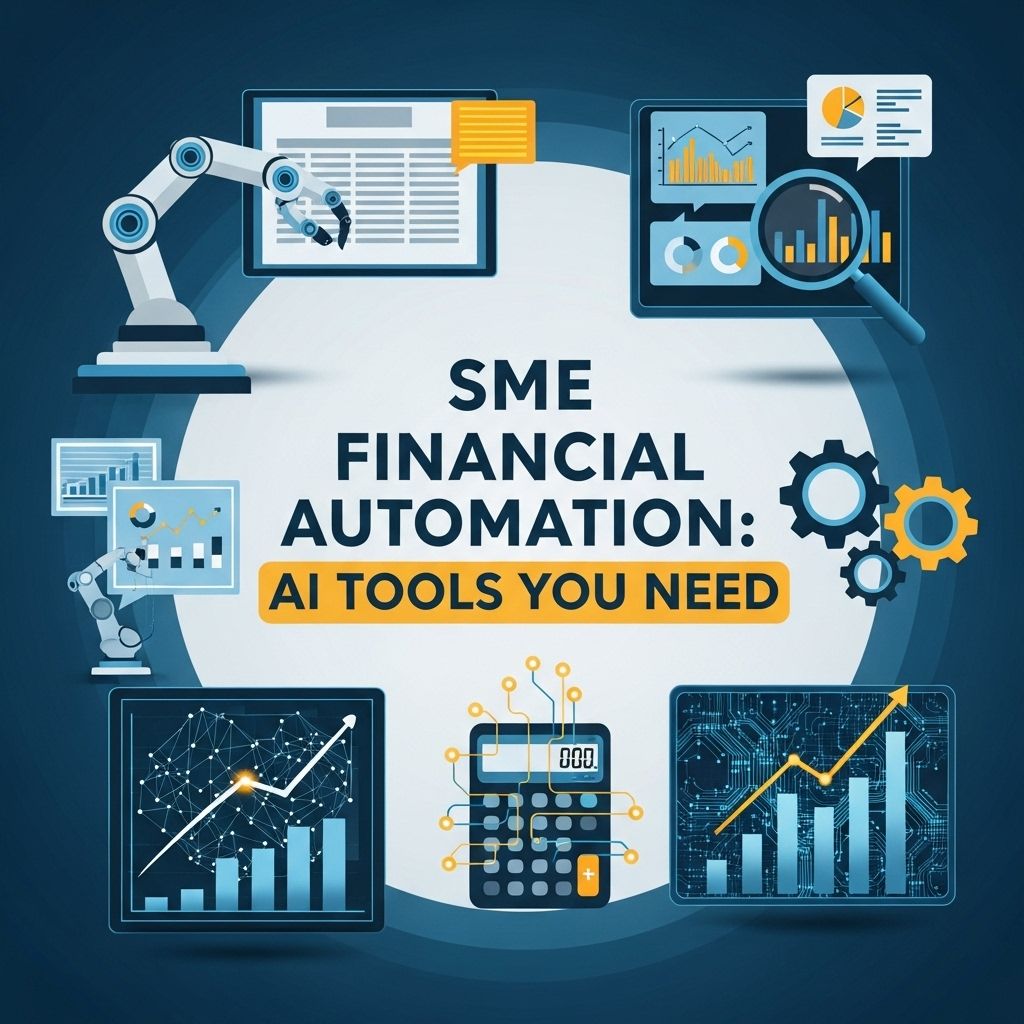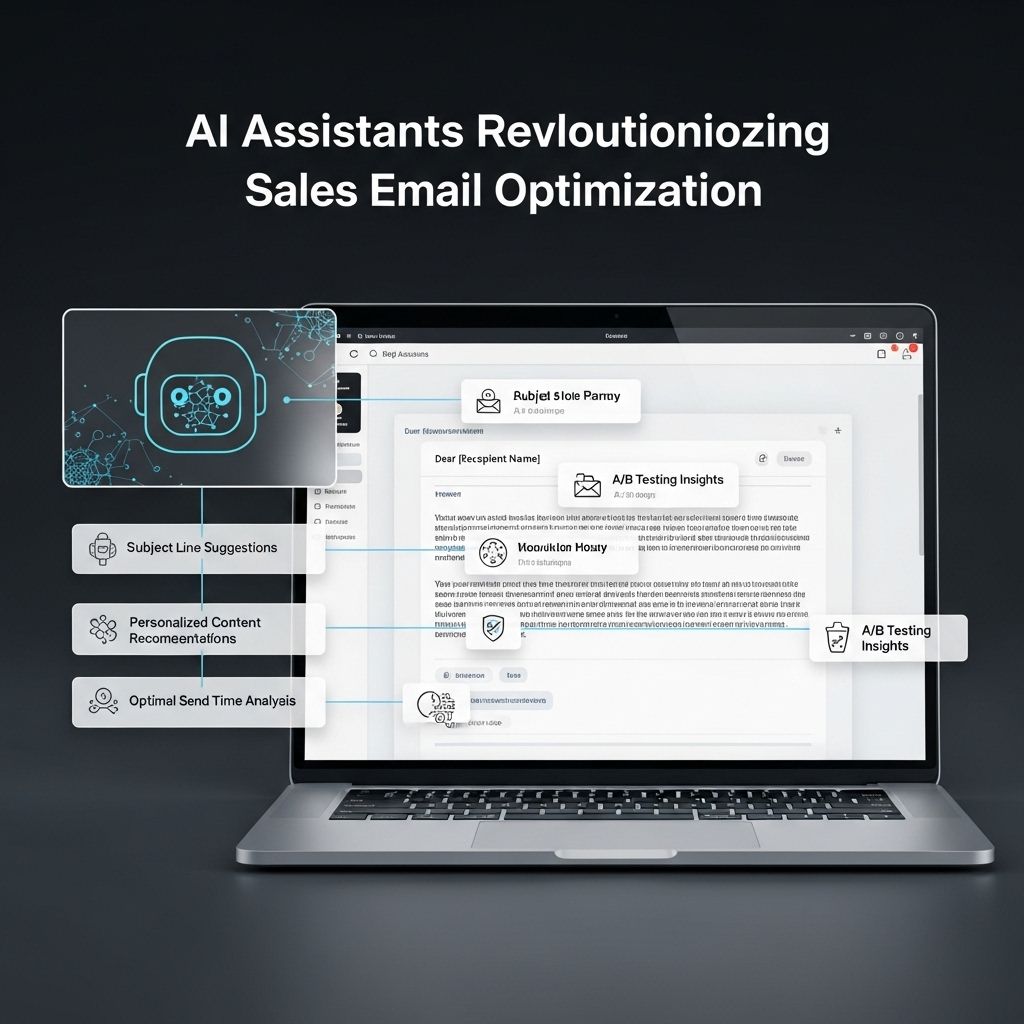Essential AI Tools for SME Financial Automation
Discover the top AI tools that can streamline financial processes for SMEs, saving time and boosting efficiency.

In the ever-evolving landscape of financial management, small and medium enterprises (SMEs) are increasingly turning to automation to enhance their operational efficiency. With the integration of Artificial Intelligence (AI) tools, financial processes can be streamlined, allowing SMEs to focus on growth and innovation. This article explores the various AI technologies that are revolutionizing financial automation for SMEs, ensuring they stay competitive in a technology-driven market.
Table of Contents
The Importance of Financial Automation for SMEs
Financial automation refers to the use of technology to automate financial processes, reducing the need for manual intervention. For SMEs, adopting financial automation can yield numerous benefits, including:
- Cost Efficiency: Automation significantly reduces labor costs associated with manual financial tasks.
- Accuracy: AI tools minimize human errors, leading to more reliable financial data.
- Time Savings: Automation speeds up processes such as invoicing and payroll, freeing up valuable time for strategic decision-making.
- Scalability: AI solutions can easily scale with business growth, adapting to increased financial complexities.
Key AI Tools for Financial Automation
Here is a list of essential AI tools that SMEs should consider for their financial automation needs:
1. Automated Bookkeeping Software
Automated bookkeeping software leverages AI to manage financial records, invoices, and receipts. Some popular options include:
| Software | Key Features | Pricing |
|---|---|---|
| QuickBooks | Real-time reporting, automated invoicing, and expense tracking | $25/month |
| Xero | Bank reconciliation, multi-currency support, and customizable invoicing | $12/month |
| FreshBooks | Time tracking, expense management, and client collaboration | $15/month |
2. AI-Powered Expense Management Tools
Expense management tools help businesses track and control spending. AI capabilities allow for smarter categorization and fraud detection. Leading tools include:
- Expensify: Automates the expense reporting process and uses AI to scan and categorize receipts.
- Concur: Integrates travel and expense management, offering analytics powered by AI.
- Zoho Expense: Features AI-driven insights for smarter financial management.
3. Intelligent Invoice Processing
AI-driven invoice processing tools can automatically extract information from invoices, reducing the time spent on manual entry. Notable solutions are:
- ABBYY FlexiCapture: Uses machine learning to learn from historical data and improve accuracy over time.
- Kofax: Offers end-to-end invoice processing with AI-enhanced data extraction.
- Tipalti: Streamlines the entire accounts payable process using AI to reduce errors and improve efficiency.
Benefits of AI in Financial Automation
Integrating AI into financial automation provides an array of advantages:
Enhanced Decision-Making
AI tools analyze vast amounts of data quickly, providing insights that enable better financial decision-making. For instance:
- Predictive analytics can forecast cash flow trends.
- Real-time dashboards can display key performance indicators (KPIs) for financial health.
Improved Compliance and Risk Management
AI can help SMEs stay compliant with financial regulations by automatically monitoring transactions and flagging anomalies. This reduces the risk of fraud and non-compliance penalties. Key features include:
- Automated audit trails.
- Regular compliance updates.
Streamlined Communication
AI chatbots are increasingly being used in financial departments to handle routine inquiries and support staff in real-time. This can lead to:
- Faster response times.
- Reduced workload for finance teams.
Challenges in Implementing AI Financial Tools
Despite the benefits, SMEs may face challenges when adopting AI in financial automation:
1. High Initial Investment
Implementing AI tools often requires significant upfront costs, which can be a barrier for smaller enterprises. To manage this, SMEs can:
- Consider cloud-based solutions with lower upfront fees.
- Seek software vendors that offer tiered pricing based on features and business size.
2. Data Security Concerns
As financial data is sensitive, SMEs must ensure that the AI tools they implement comply with data protection regulations like GDPR. Strategies to mitigate risks include:
- Choosing tools with robust security measures.
- Regularly updating software to protect against vulnerabilities.
3. Change Management
Transitioning to automated systems may encounter resistance from staff accustomed to traditional processes. To facilitate change:
- Provide comprehensive training programs.
- Communicate the long-term benefits of AI tools to the team.
Future Trends in Financial Automation
The future of financial automation is promising, with trends that will further enhance SME operations:
1. Increased AI Integration
As AI technology advances, we can expect deeper integration of AI into all aspects of financial management, leading to:
- More personalized financial solutions.
- Advanced predictive analytics.
2. Blockchain Technology
Blockchain is poised to revolutionize financial automation by providing secure and transparent transaction records. Benefits include:
- Improved security.
- Reduced transaction costs.
3. Greater Focus on Sustainability
As environmental concerns gain prominence, AI tools will likely evolve to help SMEs manage their carbon footprint and promote sustainable practices through:
- Automated carbon tracking.
- Guidelines for sustainable financial practices.
Conclusion
The integration of AI tools in financial automation offers SMEs a pathway to greater efficiency, accuracy, and strategic insight. While there are challenges to navigate, the long-term benefits and future trends point towards a transformative impact on how SMEs manage their finances. By embracing these technologies, SMEs can position themselves for success in an increasingly competitive marketplace.
FAQ
What is SME financial automation?
SME financial automation refers to the use of technology and software solutions to streamline and automate financial processes in small and medium-sized enterprises, enhancing efficiency and reducing manual errors.
How can AI tools benefit SMEs in financial automation?
AI tools can help SMEs by automating repetitive tasks, providing insights through data analysis, improving accuracy in financial reporting, and enabling better decision-making through predictive analytics.
What are some examples of AI tools for financial automation?
Examples of AI tools for financial automation include accounting software like QuickBooks and Xero, expense management tools like Expensify, and financial analytics platforms such as Tableau and IBM Watson.
Is financial automation cost-effective for small businesses?
Yes, financial automation can be cost-effective for small businesses by reducing labor costs, minimizing errors, and allowing staff to focus on strategic tasks rather than manual data entry.
What challenges do SMEs face when implementing financial automation?
Challenges include the initial cost of software, resistance to change from employees, the need for training, and ensuring data security and compliance with regulations.
How can SMEs choose the right financial automation tools?
SMEs should assess their specific needs, budget constraints, scalability options, user-friendliness, integration capabilities with existing systems, and the level of customer support provided by the tool.








